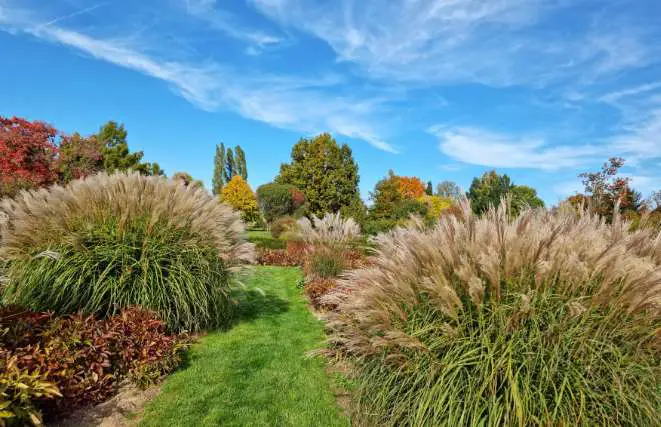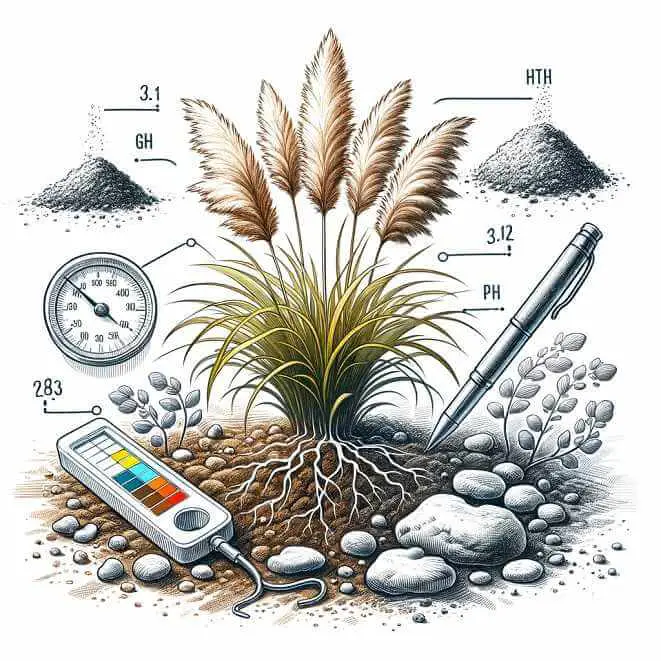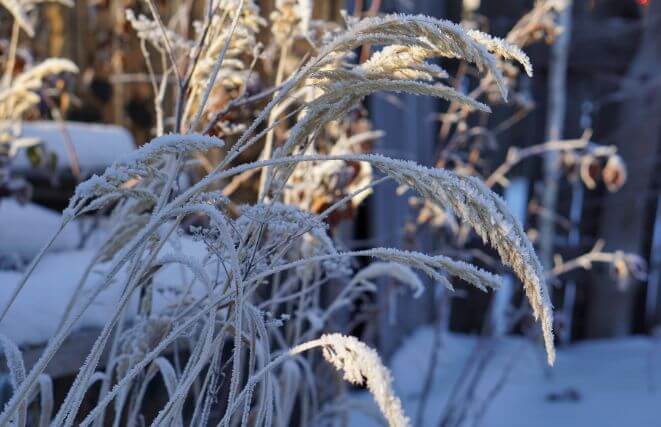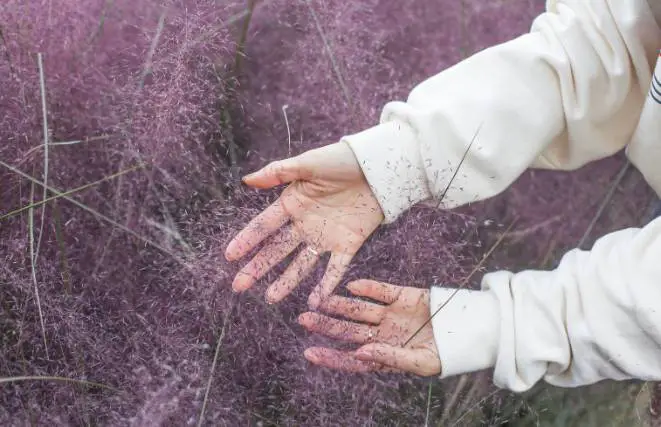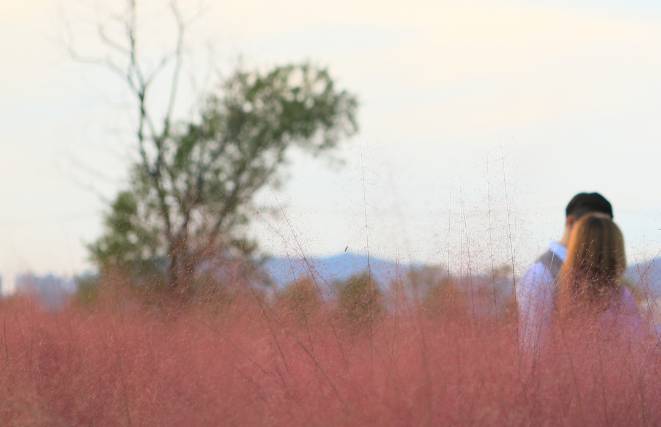Creating a visually captivating landscape requires careful planning and strategic plant selection. Ornamental grasses offer a stunning combination of beauty, versatility, and low maintenance, making them an excellent addition to any garden. To ensure the success of your ornamental grasses, it is crucial to understand the ideal timing for planting. In this comprehensive guide, we will explore the best practices, seasonal considerations, and expert tips to help you determine when to plant ornamental grasses and cultivate a vibrant and thriving outdoor sanctuary.
Understanding Ornamental Grasses
Before we dive into the optimal timing for planting ornamental grasses, let’s familiarize ourselves with these exceptional plants. Ornamental grasses come in various shapes, sizes, and colors, adding texture, movement, and architectural interest to any landscape. From the graceful feathery plumes of Miscanthus to the stunning silver foliage of Mexican feather grass, these grasses can enhance the beauty of your garden while requiring minimal care.
Factors to Consider for Planting Ornamental Grasses
To ensure the success of your ornamental grasses, several factors need to be taken into account when determining the ideal planting time. These factors include:
- Climate considerations: Different grass species have specific climate preferences. Research the hardiness zones and growing requirements for the particular grass species you plan to plant to ensure they can thrive in your region.
- Seasonal timing: While ornamental grasses can be planted at various times throughout the year, the best results are often achieved by aligning planting with the natural growth cycles of the grasses. Spring and fall are generally the most favorable seasons for planting, as they provide the ideal balance of moisture, moderate temperatures, and root development.
- Soil conditions: Before planting, assess the soil quality and ensure it is well-draining and nutrient-rich. Ornamental grasses generally prefer slightly acidic to neutral soil pH levels.
- Sunlight requirements: Most ornamental grasses thrive in full sun to partial shade. Consider the sunlight exposure in the intended planting area and select grass species that are well-suited to those conditions.
Seasonal Considerations
Spring Planting
Spring is an optimal time for planting ornamental grasses, as the soil begins to warm up, and the risk of frost diminishes. By planting in early spring, the grasses have ample time to establish their root systems and acclimate to their new surroundings before the summer heat arrives. Spring planting allows the grasses to experience a full growing season, resulting in better growth and establishment.
Fall Planting
Fall is another favorable time to plant ornamental grasses. As the temperatures cool down and rainfall increases, the soil retains moisture more effectively, providing favorable conditions for root establishment. Fall planting allows the grasses to establish their root systems during the dormant period, ensuring they are ready to flourish in the following spring. Additionally, planting in the fall reduces competition from weeds, giving the grasses a head start in the coming growing season.
When to Plant Ornamental Grasses
The best time to plant ornamental grasses depends on the specific type of grass. Cool-season grasses are typically planted in early spring or early fall, while warm-season grasses are planted in late spring or early summer. Evergreen and deciduous grasses are also planted in spring or fall. It’s important to consider the specific recommendations for the grass variety you’re planting and take into account your local climate and growing conditions for the most successful planting timing.
Comparison table with examples of Popular Ornamental Grasses
| Ornamental Grass | Best Time to Plant | Examples of Plants |
|---|---|---|
| Cool-Season Grasses | Early spring or early fall | Feather Reed Grass (Calamagrostis acutiflora), Blue Fescue (Festuca glauca) |
| Warm-Season Grasses | Late spring or early summer | Maiden Grass (Miscanthus sinensis), Fountain Grass (Pennisetum alopecuroides) |
| Evergreen Grasses | Spring or fall | Japanese Forest Grass (Hakonechloa macra), Lilyturf (Liriope spicata) |
| Deciduous Grasses | Spring or fall | Switchgrass (Panicum virgatum), Little Bluestem (Schizachyrium scoparium) |
| Native Grasses | Spring or fall | Indian Grass (Sorghastrum nutans), Big Bluestem (Andropogon gerardii) |
| Ornamental Bamboo | Spring or early fall | Golden Bamboo (Phyllostachys aurea), Black Bamboo (Phyllostachys nigra) |
Please note that the examples provided are for reference and there are many other varieties available within each category. Always consider the specific requirements of the grass species you intend to plant and consult local gardening resources for the most appropriate planting times in your specific region.
Expert Tips for Planting Ornamental Grasses
- Prepare the planting area: Clear the planting area of any weeds, rocks, or debris. Loosen the soil to ensure proper root penetration and water drainage.
- Dig the planting hole: Dig a hole slightly larger and deeper than the grass’s root ball. This extra space allows the roots to spread and establish more easily.
- Planting technique: Gently place the ornamental grass in the hole, ensuring the top of the root ball is level with or slightly above the soil surface. Backfill the hole with soil, firming it gently around the roots to eliminate air pockets.
- Watering and mulching: After planting, water the grasses thoroughly to settle the soil and provide initial moisture. Apply a layer of organic mulch around the base of the plants to conserve moisture, suppress weed growth, and regulate soil temperature.
- Ongoing care: Regularly water the newly planted grasses, especially during dry spells, to promote healthy root development. Monitor their growth and address any pests or diseases promptly.
Growing ornamental grasses in pots
Growing ornamental grasses in pots is a fantastic option for adding texture, height, and visual interest to your outdoor space, even if you have limited garden space or want to create a mobile display. Here are some key considerations for successfully growing ornamental grasses in pots:
Container Selection
Choose a pot or container that is large enough to accommodate the growth of the grasses. The container should have drainage holes to prevent waterlogged soil.
Soil Mix
Use a well-draining soil mix specifically formulated for container gardening. This ensures proper drainage and prevents waterlogging, which can be detrimental to the health of the grasses. Adding some perlite or coarse sand to the soil mix can improve drainage further.
Grass Selection
Select grass species that are suitable for container gardening. Compact or dwarf varieties work best, as they are better suited to the limited space of a pot. Some popular ornamental grasses for pots include Carex, Festuca, Hakonechloa, and Pennisetum.
Sunlight Requirements
Place the pots in an area that receives adequate sunlight for the specific grass species you have chosen. Most ornamental grasses prefer full sun, but some can tolerate partial shade. Check the sunlight requirements for the grass species and position the pots accordingly.
Watering
Container-grown ornamental grasses may require more frequent watering compared to those planted in the ground. Monitor the moisture level of the soil and water when the top inch of soil feels dry. Avoid overwatering to prevent root rot.
Fertilizing
Provide a balanced slow-release fertilizer or use a liquid fertilizer designed for ornamental grasses. Follow the manufacturer’s instructions for application rates and frequency.
Maintenance
Regularly remove any dead or faded foliage from the grasses to maintain their appearance. Divide the grasses as needed to prevent overcrowding and promote healthy growth.

Winter Protection
If you live in a region with harsh winters, consider protecting the pots and grasses during the cold months. Move the pots to a sheltered area or wrap them with insulating material to prevent damage from freezing temperatures.
Remember to check the specific care requirements for the ornamental grass species you choose, as they may have slightly different preferences. By providing the right container, well-draining soil, appropriate sunlight, regular watering, and necessary maintenance, you can successfully grow ornamental grasses in pots and enjoy their beauty in any space.
5 Great Ornamental Grasses to Grow in Pots
| Ornamental Grass | Height | Foliage Color | Flower/Plume Color | Light Requirements | Watering Needs | Suitable Pot Size |
|---|---|---|---|---|---|---|
| Japanese Forest Grass | 1-2 feet | Green to Golden | Non-flowering | Partial Shade to Shade | Moderate to High | 12-14 inches |
| Blue Fescue | 6-12 inches | Blue to Silver | Non-flowering | Full Sun | Low | 8-10 inches |
| Dwarf Fountain Grass | 1-2 feet | Green to Burgundy | Pink to Red | Full Sun | Moderate to High | 10-12 inches |
| Elijah Blue Fescue | 8-12 inches | Blue to Silver | Non-flowering | Full Sun | Low | 8-10 inches |
| Black Mondo Grass | 6-8 inches | Deep Purple to Black | Non-flowering | Partial Shade to Shade | Moderate to High | 8-10 inches |
Please note that the height, color, and other characteristics may vary slightly depending on growing conditions and cultivars. The suitable pot size mentioned is a general guideline, and it’s important to choose a pot that provides enough space for the grasses’ root systems. Regular watering, appropriate light exposure, and well-draining soil are crucial for successful container cultivation of ornamental grasses.
Tall Ornamental Grasses
Tall ornamental grasses for privacy are a stunning addition to any garden or landscape, providing vertical interest, movement, and a sense of drama. These majestic grasses can reach impressive heights, creating a striking focal point or serving as a beautiful backdrop for other plants. With their graceful foliage, elegant plumes, and architectural structure, tall ornamental grasses add a touch of elegance and natural beauty to outdoor spaces.
One popular tall ornamental grass is the Miscanthus sinensis, commonly known as Maiden Grass. This grass can grow up to 6 to 8 feet in height, creating a dramatic effect in the garden. It features slender, arching leaves that sway gracefully in the breeze, adding a sense of motion and life to the landscape. In late summer to early fall, Maiden Grass produces feathery plumes that emerge in shades of silver, pink, or copper, adding another layer of visual interest. This grass is incredibly versatile and can be used as a specimen plant, a privacy screen, or as part of a mixed border, providing structure and texture.
Another impressive tall grass is the Cortaderia selloana, commonly known as Pampas Grass. With its large, feathery plumes that can tower up to 10 feet or more, Pampas Grass creates a show-stopping display in any garden. The plumes come in various shades, including white, pink, or purple, adding vibrant colors and a sense of grandeur. Pampas Grass is known for its robust growth and ability to withstand different weather conditions. It can be used as a focal point in the landscape or as a striking backdrop for other flowering plants. However, it’s important to note that Pampas Grass can be invasive in some regions, so it’s crucial to choose a non-invasive cultivar or check with local authorities before planting it.
Ways to Use Ornamental Grasses in Your Landscape
Ornamental grasses offer a multitude of creative and versatile ways to enhance your landscape design. Their unique textures, graceful movements, and varied heights make them excellent additions to gardens, borders, and even containers. One popular way to utilize ornamental grasses is by creating a natural-looking meadow or prairie-style planting. Combine different varieties of grasses, such as switchgrass, feather reed grass, and little bluestem, to mimic the beauty of a wild landscape. These grasses can sway in the breeze, creating a sense of movement and providing a stunning backdrop for other flowering plants.
Another way to use ornamental grasses is to create visual interest and focal points in your garden. Plant taller varieties, like maiden grass or pampas grass, as standalone specimens or in small groups to draw the eye and add vertical accents. The feathery plumes of certain grasses, such as fountain grass or muhly grass, can create stunning displays in late summer or fall, adding vibrant colors and textures to your landscape. Additionally, ornamental grasses can be incorporated into mixed borders or used to create natural screens or hedges, providing privacy and structure while adding a touch of elegance to your outdoor space.
FAQ
Ornamental grasses are best planted in locations that provide ample sunlight, well-drained soil, and sufficient space for their growth. Most ornamental grasses thrive in full sun, receiving at least 6 to 8 hours of direct sunlight per day. They prefer soil that is fertile, loamy, and well-drained to avoid waterlogging. Additionally, select a planting location that allows enough space for the particular grass species to reach its mature size without overcrowding other plants or structures.
The best conditions for ornamental grasses include ample sunlight, well-drained soil, and appropriate watering. Most ornamental grasses thrive in full sun, receiving at least 6 to 8 hours of direct sunlight each day. They prefer soil that is fertile, loamy, and well-drained to avoid waterlogged roots. While they are generally adaptable to different watering conditions, it’s important to provide consistent moisture during their establishment phase and avoid overwatering once they are established. Additionally, selecting grass species that are suitable for your local climate and hardiness zone is important for their overall health and growth.
One of the easiest ornamental grasses to grow from seed is the Pennisetum setaceum, commonly known as Purple Fountain Grass. It is a warm-season grass that produces attractive burgundy-purple foliage and feathery plumes. Purple Fountain Grass seeds are relatively easy to germinate, and the grass is known for its vigorous growth. It can be grown as an annual in colder climates or as a perennial in warmer regions. With proper care and favorable growing conditions, Purple Fountain Grass can be successfully grown from seed by gardening enthusiasts of various skill levels.
Conclusion
Planting ornamental grasses at the right time is crucial for their establishment and long-term success. By considering climate conditions, seasonal timing, soil quality, and sunlight requirements, you can create an optimal environment for these graceful and low-maintenance plants to thrive. Whether you choose to plant in the rejuvenating spring or the preparatory fall, following expert tips and best practices will set the stage for a flourishing landscape. Embrace the beauty and versatility of ornamental grasses, and enjoy a captivating garden that will delight your senses throughout the seasons. Happy planting!

